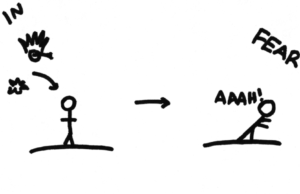Going green: Is Legalizing marijuana really worth it?
According to the 2013 Monitoring the Future study, 45.5% of high school seniors have tried marijuana, making it the most common illegal drug used by teenagers. Alaska, Oregon, and Washington D.C. recently joined Colorado and Washington in legalizing marijuana for recreational use. Is legalizing recreational marijuana the right step to take?
The short answer is: yes. In addition to making the cannabis market more transparent and regulated, legalization will make the drug harder to buy illegally while improving the education and research surrounding it.
So what is marijuana, and how will laws restrict access to it? Marijuana is made of the dried parts of the cannabis plant, which contains tetrahydrocannabinol (THC), a hallucinogenic chemical that affects the brain’s memory, reward, sensory and cognitive systems. As a recreational drug, the National Institute on Drug Abuse reports that marijuana has an addiction rate of nine percent, while tobacco and alcohol have addiction rates of 32% and 15%, respectively. No deaths caused by overdose of marijuana have been reported; at worst, an overdose can cause seizures and a trip to the hospital. However, when used heavily at a young age, it can cause permanent memory damage and emotional impairment. For this reason, states that have already legalized recreational marijuana require adults 21 years and older to show their I.D. Additionally, adults can only purchase up to one-fourth of an ounce per single transaction from a licensed seller, and only one ounce can be possessed at a time.
Legalization of recreational marijuana presents an important shift in the marijuana market. Supplies will increase as more cannabis is legally grown, causing prices to come down and minimizing black market sales. Diminishing the black market will give teens less opportunities to purchase drugs on the streets. Furthermore, registered dispensaries must follow government rules for age requirements and quantity limitations. Therefore, teens will face great obstacles in getting their hands on marijuana. Since marijuana inflicts the most damage on young users with developing brains, these restrictions will keep the drug out of the hands of adolescents and protect their health.
In addition, legalizing recreational marijuana will remove the criminalization of and stigma surrounding marijuana use and allow for more extensive research, education, and understanding of it. Since marijuana is currently a taboo substance, it’s difficult for scientists to obtain the necessary materials and approval for research. Without fear of imprisonment, marijuana users will be more forthcoming with their experiences, and addicts will be more willing to seek help. Extensive studies can be conducted on its true short-term and long-term effects, and the real dangers and benefits of marijuana can be documented. Only with these in-depth investigations can teens reliably decide for themselves whether smoking marijuana is something they’d like to try when they grow older.
After legalization, government regulations will require sellers to label products in detail so buyers will know what they are actually getting. Marijuana named “Blue Moonstone” and “Endless Skies” will no longer only have abstract descriptions of “fruity, dark aromas” or “lovely green hue.” Much like nicotine and alcohol levels are reported for cigarettes and spirits, the concentration of the active ingredients will need to be labelled, thereby enhancing the safety of marijuana consumption and keeping dangerous man-made imitations off the shelves.
Opponents of legalizing recreational marijuana fear that legalization will make the drug more accessible, which will lead to increased teenage use and addiction; however, these fears have been invalidated. According to results from the 2013 Healthy Kids Colorado survey, the usage of marijuana has not increased since its legalization for recreational use; in fact, the number has dropped. 20% reported that they had smoked it in the past month, and 37% reported they had tried it before; in 2011, those numbers were higher at 22% and 39%. This shows that legalization does not increase teenage usage.
Opponents also argue that legalizing marijuana sends the wrong message that smoking marijuana is not a big deal. According to the same survey, after legalization, adolescents did perceive marijuana as less harmful; however, this perception change did not lead to more usage. The issue is not the perception; it’s that society should give people a truthful, balanced view of marijuana’s effects on their bodies, so they can make an educated choice for themselves.
America was built on the basis of freedom and individual rights. Citizens can choose their own religion, values and lifestyle, and marijuana should be one of those decisions that people can make for themselves. Legalization of recreational marijuana is the much needed step to allow this freedom of choice while protecting adolescents from its harm.



